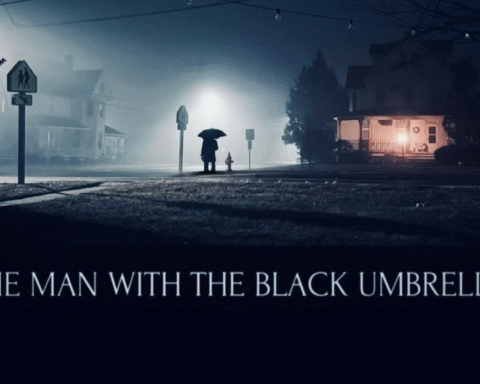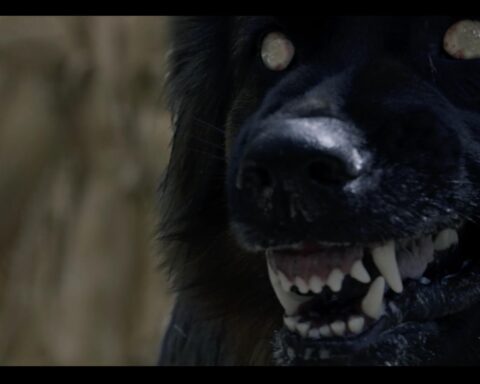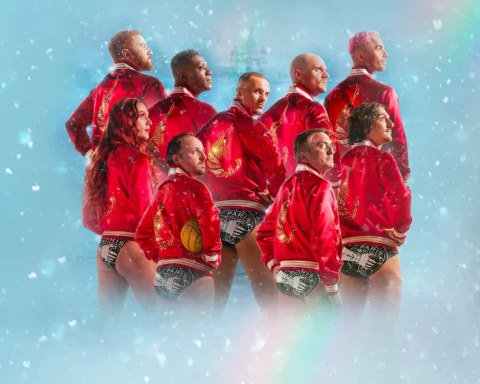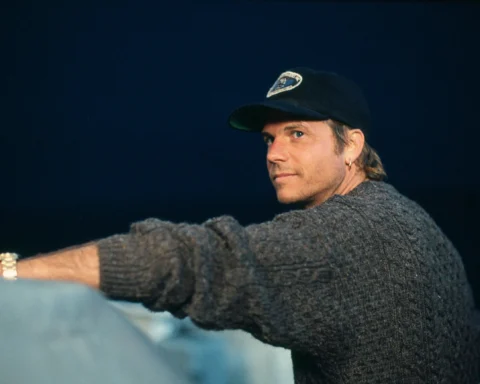In the mid-1990s, the movie industry witnessed a groundbreaking phenomenon with the release of “Twister,” a film that combined cutting-edge technology, an enthralling storyline, and a stellar cast to create an unforgettable cinematic experience. As we stand on the cusp of its eagerly anticipated sequel, “Twisters,” it’s an opportune moment to reflect on the original film’s enduring legacy and speculate on how its successor might build upon that foundation. “Twister” was not just a summer blockbuster; it was a pioneering force that redefined disaster movies and left an indelible mark on popular culture.

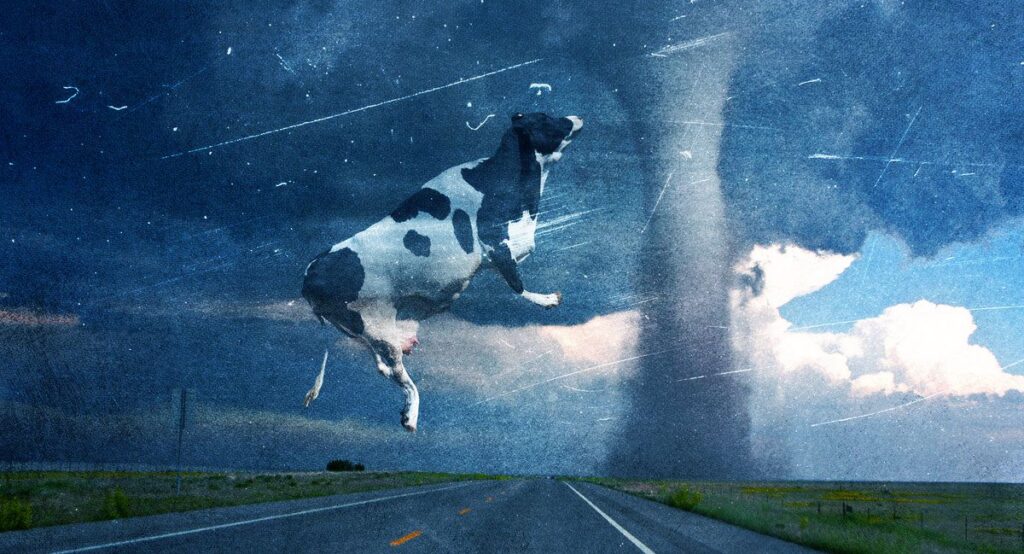

The Eye of the Storm: “Twister” and its Revolutionary Impact
Released in May 1996, “Twister” took audiences by storm—quite literally. Directed by Jan de Bont and produced by Steven Spielberg’s Amblin Entertainment, “Twister” was an ambitious project that set new standards for visual effects and sound design in cinema. At its core, the film is a high-octane adventure that follows storm chasers, led by Jo Harding (Helen Hunt) and Bill Harding (Bill Paxton), as they pursue the most dangerous weather phenomena on Earth: tornadoes.
A Technological Tornado
One of the most significant aspects of “Twister” was its pioneering use of computer-generated imagery (CGI) to create realistic tornadoes. The film’s special effects were a marvel of their time, pushing the boundaries of what was possible in digital animation. Industrial Light & Magic (ILM), the visual effects company behind the film, employed innovative techniques to render the twisters, making them look both terrifying and awe-inspiring. This was a time when CGI was still in its infancy, and “Twister” showcased its potential in a way that few films had before.
The sound design also played a crucial role in immersing the audience in the storm-chasing experience. The film won an Academy Award for Best Sound and was nominated for Best Visual Effects, a testament to the meticulous work done by the sound engineers. The roaring of the twisters, the crashing of debris, and the eerie calm before the storm were all captured with an authenticity that made viewers feel as if they were in the eye of the storm.
A Narrative Force
Beyond its technical achievements, “Twister” captivated audiences with its compelling narrative and charismatic performances. The film’s plot centers on the estranged relationship between Jo and Bill Harding, who are brought back together by their mutual obsession with tornadoes. Their dynamic, coupled with the imminent threat of deadly storms, creates a tension that drives the story forward. Helen Hunt and Bill Paxton delivered performances that were both grounded and exhilarating, bringing depth to their characters amidst the chaos.
The supporting cast, including Philip Seymour Hoffman, Cary Elwes, and Jami Gertz, added layers of humor and drama, enriching the film’s narrative fabric. The ensemble’s chemistry was palpable, making the audience care about their fates as they faced nature’s fury.
Cultural Impact
“Twister” was more than just a box office success; it became a cultural touchstone. It grossed over $494 million worldwide, making it the second-highest-grossing film of 1996. Its popularity sparked a renewed interest in meteorology and storm chasing, inspiring a generation of weather enthusiasts. The film’s influence extended to theme park attractions, such as Universal Studios’ “Twister…Ride It Out,” which allowed visitors to experience the thrill of a tornado firsthand.
Moreover, “Twister” cemented its place in pop culture through memorable lines and scenes that have been parodied and referenced in various media. The iconic image of a cow being swept up by a tornado, for instance, remains a symbol of the film’s blend of peril and spectacle.
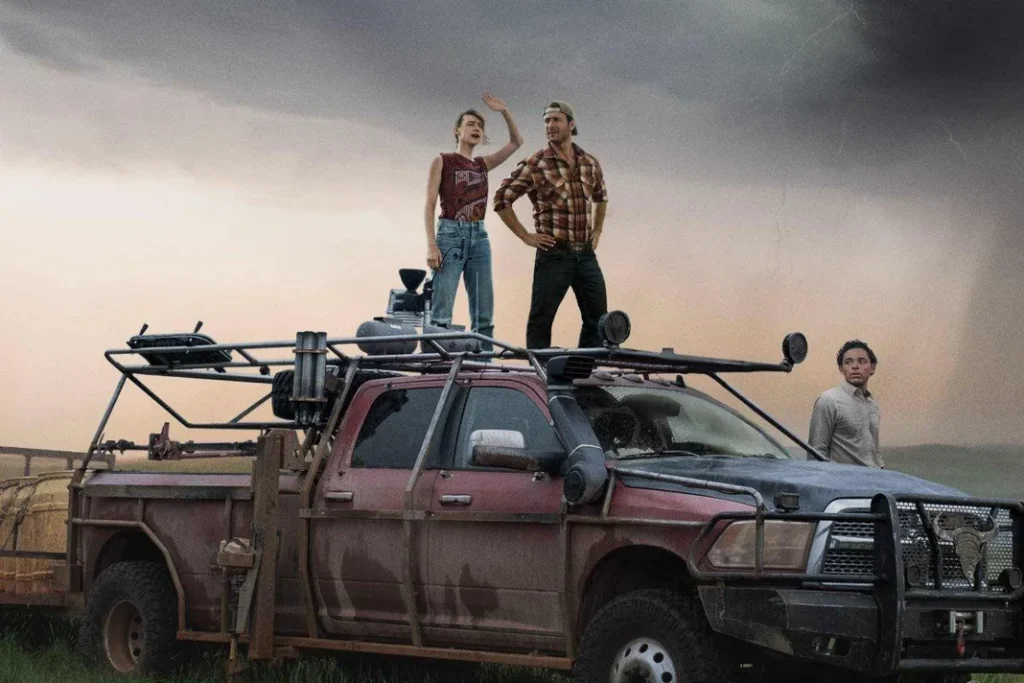


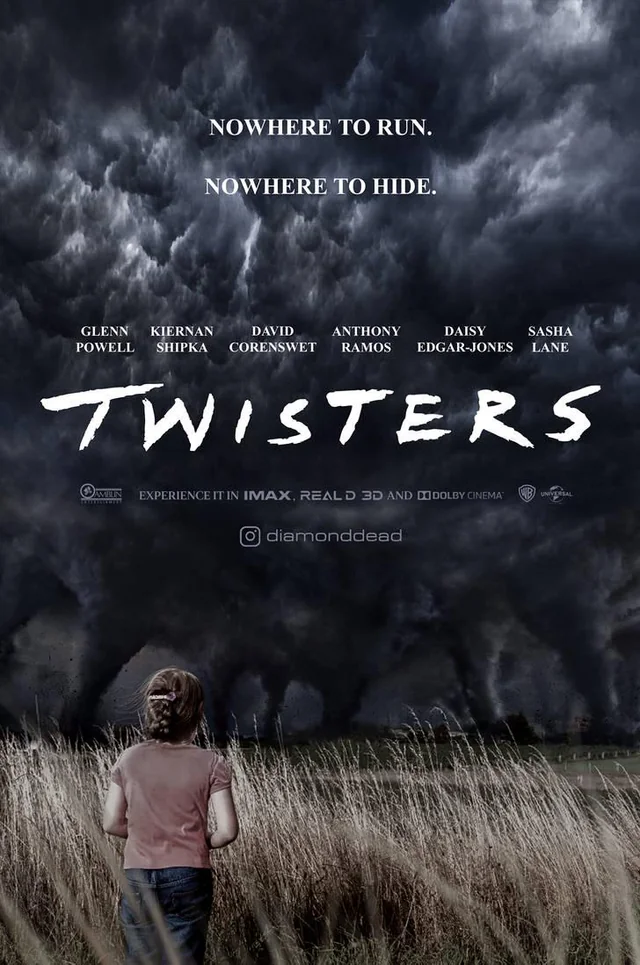
The Calm Before the Sequel: Anticipating “Twisters”
As we await the release of “Twisters,” slated for 2024, there’s a palpable sense of excitement and curiosity. What will the sequel bring to the table, and how will it build upon the legacy of its predecessor? Given the advancements in filmmaking technology and storytelling since 1996, “Twisters” has the potential to surpass the original in both scope and depth.
Evolution of Special Effects
The landscape of visual effects has transformed dramatically since “Twister” first hit theaters. Modern CGI capabilities allow for even more realistic and intricate representations of natural disasters. With studios now able to render effects that were unimaginable in the 90s, “Twisters” is poised to deliver tornado sequences that are more intense and visually stunning than ever before. The challenge will be to balance these advanced effects with a compelling narrative, ensuring that the human element remains at the forefront.
A New Generation of Storm Chasers
While the original “Twister” focused on Jo and Bill Harding, “Twisters” is expected to introduce a new generation of storm chasers. This presents an opportunity to explore fresh dynamics and perspectives within the storm-chasing community. The sequel could delve into the advancements in meteorological science and technology over the past few decades, highlighting how storm chasing has evolved. Additionally, it offers a chance to address contemporary issues, such as climate change, and how they intersect with the pursuit of understanding extreme weather.
Honoring the Legacy
One of the most delicate aspects of creating a sequel to a beloved film is honoring the original while carving out a unique identity. “Twisters” will likely pay homage to “Twister” through subtle references and callbacks, rewarding long-time fans while inviting new audiences into the fold. The involvement of original cast members, if confirmed, would provide a bridge between the two films, creating a sense of continuity and nostalgia.
The Human Element
At its core, “Twister” was not just about the spectacle of tornadoes but about the people who chase them and the relationships that bind them. “Twisters” will need to capture this human element to resonate with audiences. By focusing on character development and the emotional stakes involved in storm chasing, the sequel can create a narrative that is as engaging as the visual effects are impressive.
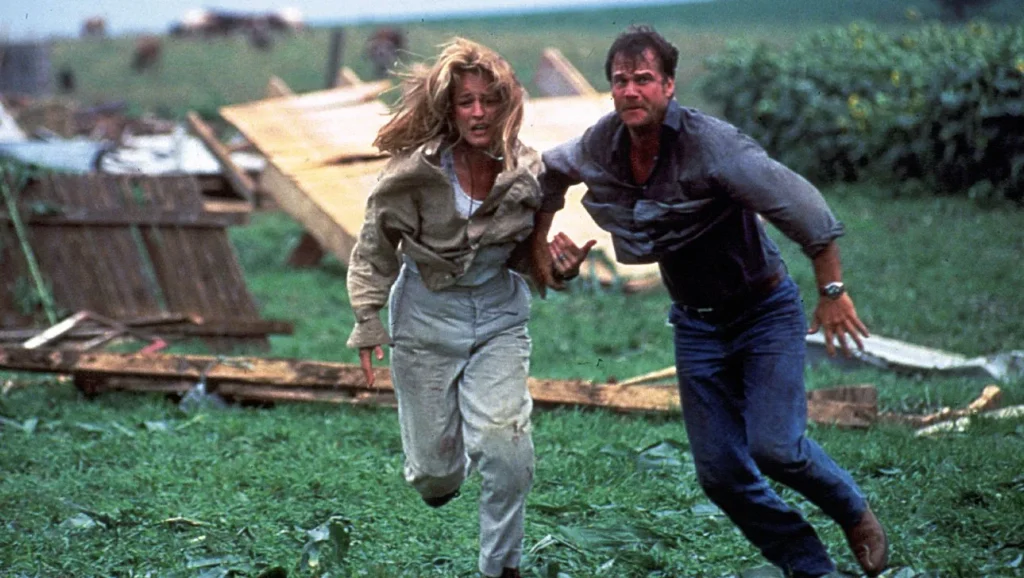
The Legacy of “Twister”: Why It Still Matters
As we reflect on the impact of “Twister,” it’s clear that its influence extends beyond its technical achievements and box office success. The film tapped into a primal fascination with nature’s power and the human drive to understand and conquer it. This timeless theme, coupled with groundbreaking visual effects and compelling storytelling, ensured that “Twister” left an indelible mark on the cinematic landscape.
A Pioneering Force in Disaster Cinema
“Twister” set a new standard for disaster films, paving the way for future blockbusters like “The Day After Tomorrow” (2004) and “2012” (2009). It demonstrated that disaster movies could be both visually spectacular and emotionally resonant, a formula that has since become a staple of the genre. The film’s success also proved that audiences had an appetite for high-stakes, adrenaline-fueled narratives that push the boundaries of what is possible on screen.
Inspiring a Generation
The film’s portrayal of storm chasers—driven by curiosity, passion, and a touch of recklessness—inspired many to pursue careers in meteorology and related fields. It brought attention to the science of tornadoes and the bravery of those who study them, shedding light on a profession that was largely unknown to the general public. In doing so, “Twister” not only entertained but also educated, leaving a lasting impact on both the film industry and the field of meteorology.
A Testimony to Collaboration
“Twister” was a testament to the power of collaboration in filmmaking. The combined efforts of director Jan de Bont, producer Steven Spielberg, screenwriters Michael Crichton and Anne-Marie Martin, and the talented cast and crew resulted in a film that was greater than the sum of its parts. This collaborative spirit is a reminder of what can be achieved when creative minds come together to push the boundaries of storytelling and technology.

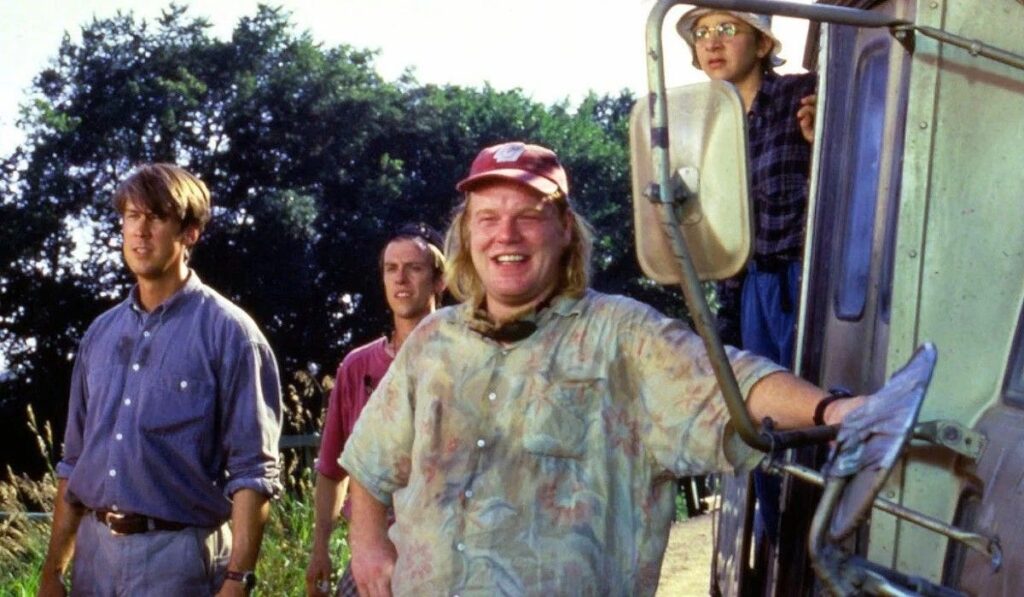

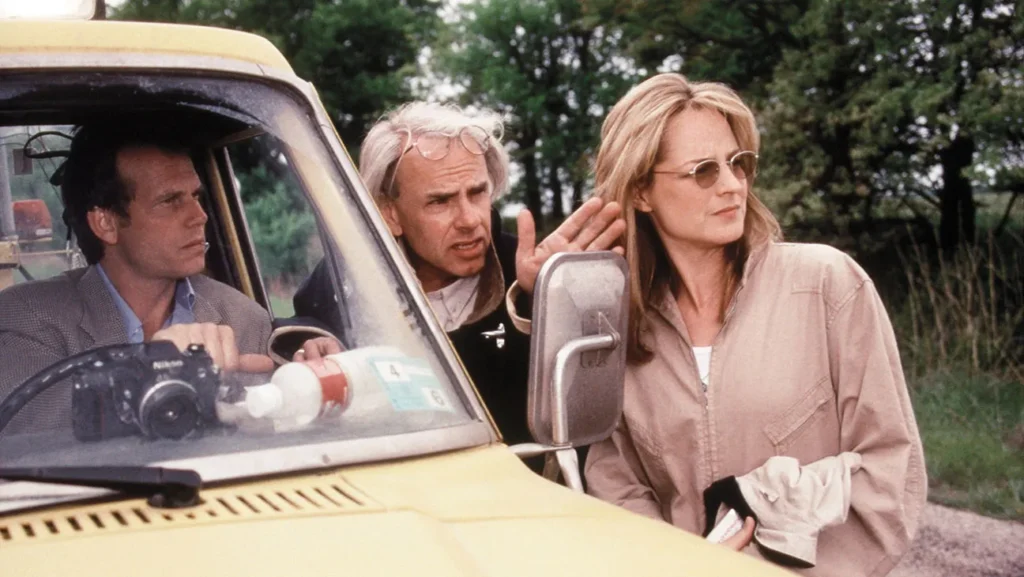
Looking Ahead: The Promise of “Twisters”
As “Twisters” approaches its release, the excitement is palpable. The sequel has the potential to reignite the same sense of wonder and thrill that made the original a classic. With advancements in technology, a fresh narrative perspective, and a deep respect for the legacy of “Twister,” “Twisters” could very well become a defining film of the 2020s.
A Modern-Day Spectacle
In an era where audiences have become accustomed to high-quality visual effects, “Twisters” will need to deliver a spectacle that stands out. The film can leverage cutting-edge CGI and practical effects to create tornado sequences that are more immersive and realistic than ever before. By doing so, it can capture the awe and terror of nature’s most formidable forces, just as the original did nearly three decades ago.
Depth and Nuance in Storytelling
While visual effects are crucial, the heart of “Twisters” will lie in its storytelling. By exploring the motivations, fears, and triumphs of a new generation of storm chasers, the film can create a narrative that is both engaging and thought-provoking. Themes of resilience, curiosity, and the human spirit’s drive to explore the unknown can resonate with audiences on a deeper level, making “Twisters” a film that is as emotionally impactful as it is visually stunning.
Bridging the Past and Future
“Twisters” has the unique challenge of appealing to fans of the original film while also attracting new viewers. By striking a balance between nostalgia and innovation, the sequel can create a sense of continuity that honors “Twister” while establishing its own identity. This delicate balance will be key to the film’s success, ensuring that it resonates with a wide audience.

Conclusion: The Enduring Storm
“Twister” was more than just a film; it was a cultural event that captivated audiences and redefined what was possible in disaster cinema. Its legacy is evident in the continued fascination with tornadoes, the inspiration it provided to aspiring meteorologists, and the high standard it set for visual effects in film. As we look forward to the release of “Twisters,” there is a sense of anticipation and excitement for what the sequel will bring.
By building on the foundation laid by “Twister,” “Twisters” has the potential to become a landmark film in its own right. With advancements in technology, a compelling narrative, and a deep respect for the original, the sequel could once again capture the imagination of audiences worldwide. In the ever-evolving landscape of cinema, “Twister” remains a testament to the power of storytelling and the enduring appeal of nature’s most dramatic spectacles. As the storm clouds gather once more, we can only wait and watch, eager to be swept up in the whirlwind once again.

